Tips to Establish an Ideal Eco-Friendly Indoor Garden
Creating an eco-friendly indoor garden is a fantastic way to not only beautify your living space but also contribute positively to the environment. Imagine stepping into a room filled with lush greenery, where each plant not only enhances the aesthetics but also purifies the air you breathe. An indoor garden can be your personal sanctuary, a place where you can unwind and reconnect with nature, all while practicing sustainability. This article provides practical advice for creating a sustainable indoor garden, focusing on eco-friendly practices, plant selection, and maintenance techniques that benefit both the environment and your living space.
When it comes to establishing an indoor garden, the first step is to select the right plants. Choosing varieties that thrive indoors while being low-maintenance and eco-friendly is crucial. Some of the best options include snake plants, peace lilies, and pothos. These plants not only require minimal care but also contribute to a sustainable environment by filtering out toxins from the air. Each of these plants has unique characteristics that make them perfect for indoor gardening:
| Plant | Light Requirements | Benefits |
|---|---|---|
| Snake Plant | Low to bright indirect light | Improves air quality, drought-resistant |
| Peace Lily | Low to medium light | Removes toxins, blooms beautifully |
| Pothos | Low to bright indirect light | Fast-growing, purifies air |
By incorporating these plants into your indoor garden, you not only create a vibrant space but also contribute to a healthier indoor environment.
Maximizing natural light is essential for plant health. Positioning your indoor garden to take advantage of sunlight while minimizing energy consumption leads to a more sustainable gardening approach. Have you ever noticed how plants seem to reach for the light? This is because they thrive on sunlight, which is their primary energy source. By placing your plants near windows or in well-lit areas, you can ensure they receive adequate light without relying heavily on artificial sources.
Different plants have varying light needs. For instance, while snake plants can thrive in low light, succulents prefer bright, direct sunlight. Assessing your plants' light requirements is crucial for their growth. To create an optimal lighting environment, consider factors such as:
- The direction your windows face
- The time of day when sunlight is strongest
- Seasonal changes in sunlight availability
Incorporating reflective surfaces can enhance light distribution. Mirrors and light-colored walls can help maximize sunlight for your indoor plants. Imagine how a simple mirror can bounce light around the room, creating a brighter environment for your green friends to flourish. This trick not only helps your plants but also brightens up your space, creating a more inviting atmosphere.
When natural light is insufficient, grow lights can be a sustainable solution. Energy-efficient grow light options, such as LED lights, can support your indoor garden without excessive energy use. These lights mimic natural sunlight, providing your plants with the light they need to thrive, especially during the darker months of the year.
Maintaining humidity and temperature levels is vital for plant health. Most indoor plants thrive in a humidity range of 40-60%. You can create a balanced indoor environment by using humidifiers or grouping plants together, as they naturally increase humidity. Additionally, keeping your indoor temperature between 65°F to 75°F (18°C to 24°C) ensures that your plants are comfortable and happy.
Effective watering practices are crucial for an eco-friendly indoor garden. Overwatering can lead to root rot, while underwatering can stress your plants. Explore techniques that conserve water and promote healthy growth while reducing waste. For instance, using a moisture meter can help you determine when your plants truly need water, preventing unnecessary waste.
Establishing a consistent watering schedule can prevent overwatering and underwatering. Consider creating a simple chart or using a calendar reminder to keep track of your plants' needs. This way, you can ensure that each plant receives the right amount of water, promoting a healthy indoor garden.
Collecting rainwater is an eco-friendly practice that can significantly reduce your water usage. Setting up a simple rainwater collection system for your indoor garden not only conserves water but also provides your plants with natural, chemical-free hydration. Just imagine how satisfying it is to nourish your plants with rainwater, knowing you're making a positive impact on the environment!
Composting is an excellent way to recycle organic waste into nutrient-rich soil. By starting a composting system, you can support your indoor plants while minimizing waste. Not only does composting reduce the amount of trash sent to landfills, but it also enriches your soil, giving your plants the nutrients they need to thrive.
There are various composting methods suitable for indoor gardens. Options include:
- Bokashi Composting: A fermentation method that works well in small spaces.
- Vermicomposting: Using worms to break down organic matter quickly.
- Traditional Composting: Layering organic materials in a bin or container.
Proper maintenance is key to successful composting. Regularly turning your compost and monitoring moisture levels will ensure a healthy composting process. With a little attention, your compost can become a powerhouse of nutrients for your indoor garden.
Managing pests sustainably is essential for an indoor garden. Instead of reaching for chemical pesticides, explore natural pest control methods that protect your plants without harming the environment. Understanding how to maintain a balanced ecosystem in your indoor garden can lead to healthier plants and a more enjoyable gardening experience.
Recognizing common pests that affect indoor plants is the first step in effective management. Look out for signs of infestation such as yellowing leaves, webbing, or small holes in foliage. Being proactive in identifying these issues can save your plants from significant damage.
This section discusses various natural pest control methods, including beneficial insects like ladybugs and organic sprays made from neem oil or insecticidal soap. By employing these methods, you can maintain a healthy indoor garden ecosystem without resorting to harmful chemicals.
Indoor gardening offers numerous benefits, including improved air quality and enhanced mental well-being. Cultivating an eco-friendly indoor garden has positive impacts on your health and environment. Just think about how nurturing plants can transform your space into a vibrant oasis!
Indoor plants can significantly improve air quality by filtering pollutants. Specific plants, such as the spider plant and bamboo palm, are known for their air-purifying qualities. Incorporating these plants into your home can lead to a fresher, healthier atmosphere for you and your loved ones.
Gardening has therapeutic benefits that can enhance mental well-being. The act of nurturing plants can reduce stress and promote a sense of tranquility in your home. It's like having a little piece of nature right at your fingertips, providing solace and joy in our busy lives.
Q: What are the best plants for beginners in indoor gardening?
A: Some of the best plants for beginners include snake plants, pothos, and peace lilies, as they are low-maintenance and thrive in various light conditions.
Q: How often should I water my indoor plants?
A: The watering frequency depends on the plant type and environmental conditions. Generally, check the top inch of soil; if it's dry, it's time to water.
Q: Can I use regular soil for indoor plants?
A: While you can use regular soil, it's better to use potting mix specifically designed for indoor plants, as it provides better drainage and aeration.
Q: How can I tell if my indoor plants are getting enough light?
A: If your plants are stretching towards the light or their leaves are turning yellow, they might not be getting enough light. Adjust their position for optimal sunlight exposure.

Choosing the Right Plants
When it comes to establishing your ideal eco-friendly indoor garden, is absolutely crucial. Not only do you want plants that will thrive in your indoor environment, but you also want varieties that require minimal maintenance and contribute positively to the ecosystem. Imagine walking into your living space and being greeted by vibrant green leaves and colorful blooms, all while knowing you're making a sustainable choice for the planet!
So, what should you look for in plants that are suitable for indoor gardening? First off, consider their light requirements. Some plants flourish in bright, direct sunlight, while others prefer low-light conditions. For instance, succulents and cacti are perfect for sun-drenched spots, whereas ferns and snake plants can thrive in shadier corners. This variety allows you to create a lush, green oasis regardless of the lighting in your home.
Another important factor is the plant's ability to purify the air. Many indoor plants have been shown to improve air quality by filtering out harmful toxins. For example, the peace lily and spider plant are not just beautiful; they also work hard to clean the air you breathe. Imagine how refreshing it would be to have a natural air purifier right in your living room!
To help you in your selection process, here’s a quick comparison of some popular indoor plants that are both eco-friendly and easy to care for:
| Plant Name | Light Requirements | Air Purifying Qualities | Watering Needs |
|---|---|---|---|
| Snake Plant | Low to Bright Indirect | Yes | Low |
| Peace Lily | Low to Medium | Yes | Medium |
| Spider Plant | Bright Indirect | Yes | Medium |
| Aloe Vera | Bright Direct | Moderate | Low |
When selecting plants, think about your lifestyle too. If you travel often or have a busy schedule, opt for low-maintenance plants that can survive with minimal attention. On the other hand, if you enjoy nurturing your plants and have the time to dedicate, you might explore more exotic varieties that require a bit more care. The key is to find the perfect balance that suits your living situation and personal preferences.
In conclusion, the right plants can transform your indoor space into a thriving, sustainable ecosystem. By choosing varieties that are low-maintenance, air-purifying, and suited to your light conditions, you can create a beautiful indoor garden that not only enhances your living environment but also contributes to a healthier planet. So, are you ready to get your hands dirty and start your indoor gardening journey?
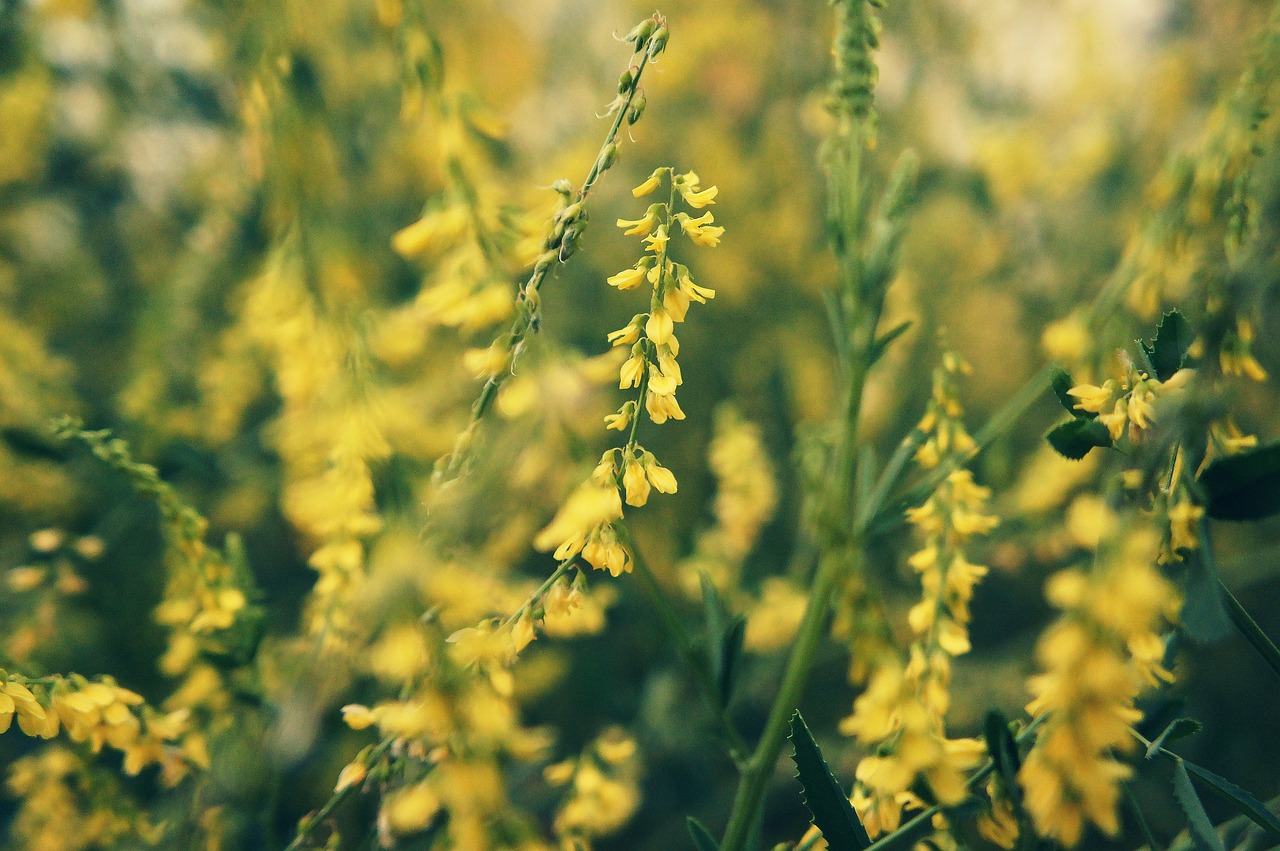
Utilizing Natural Light
Maximizing natural light is not just beneficial for your plants; it’s a cornerstone of creating a sustainable and eco-friendly indoor garden. By harnessing the power of sunlight, you can reduce your reliance on artificial lighting, which not only saves energy but also promotes healthier plant growth. But how do you ensure your indoor garden gets the sunlight it craves? It all starts with understanding your space and the unique light requirements of your plants.
First, consider the layout of your home. Are there areas that receive ample sunlight throughout the day? Ideally, you want to position your indoor garden near windows that offer the most light. South-facing windows are often the best, as they receive direct sunlight for most of the day. However, east and west-facing windows can also provide good light, especially in the morning and late afternoon. To get the most out of your space, you might want to create a light map of your home, noting the intensity and duration of sunlight in each area. This simple exercise can guide you in placing your plants where they will thrive.
Each plant has its own unique light needs. For example, succulents and cacti love bright, direct sunlight, while ferns and peace lilies prefer indirect light. To create an optimal lighting environment for your plants, you’ll need to assess their requirements. You can categorize your plants into three groups based on their light needs:
- Low Light: These plants can thrive in shaded areas and require less sunlight, making them perfect for rooms with minimal natural light.
- Medium Light: These plants do well in bright, indirect light and can adapt to various lighting conditions.
- High Light: These plants need direct sunlight for several hours a day to flourish.
Once you know your plants’ light preferences, you can adjust their positions accordingly. Just remember, if a plant is not getting enough light, it may become leggy or fail to bloom, while too much direct sunlight can scorch its leaves.
Another clever way to maximize natural light is by incorporating reflective surfaces into your indoor garden setup. Mirrors, for instance, can bounce sunlight around the room, effectively doubling the amount of light your plants receive. You can place a mirror opposite a window or even use light-colored walls to reflect sunlight. This simple trick not only enhances the aesthetic of your space but also boosts your plants’ health by ensuring they receive the light they need to thrive.
Sometimes, even the best-laid plans for natural light can fall short—especially during the winter months or in less sunny climates. That’s where grow lights come into play. When natural light is insufficient, energy-efficient grow lights can provide the necessary illumination for your indoor garden. LED grow lights are particularly effective as they consume less energy and emit less heat than traditional bulbs, making them a sustainable choice. You can set these lights on a timer to mimic natural daylight cycles, ensuring your plants get the light they need, when they need it.
In conclusion, utilizing natural light is a vital step in establishing an eco-friendly indoor garden. By understanding your plants' light requirements, positioning them strategically, using reflective surfaces, and supplementing with grow lights when necessary, you can create a thriving indoor ecosystem that benefits both your plants and the environment.
- How much sunlight do indoor plants need? Most indoor plants require about 6-8 hours of indirect sunlight each day, but this can vary based on the specific plant type.
- Can I use regular bulbs instead of grow lights? While regular bulbs can provide some light, grow lights are specifically designed to meet the light spectrum needs of plants, making them more effective for indoor gardening.
- What are some good low-light plants? Some excellent low-light options include snake plants, pothos, and ZZ plants, all of which can thrive in less sunny conditions.
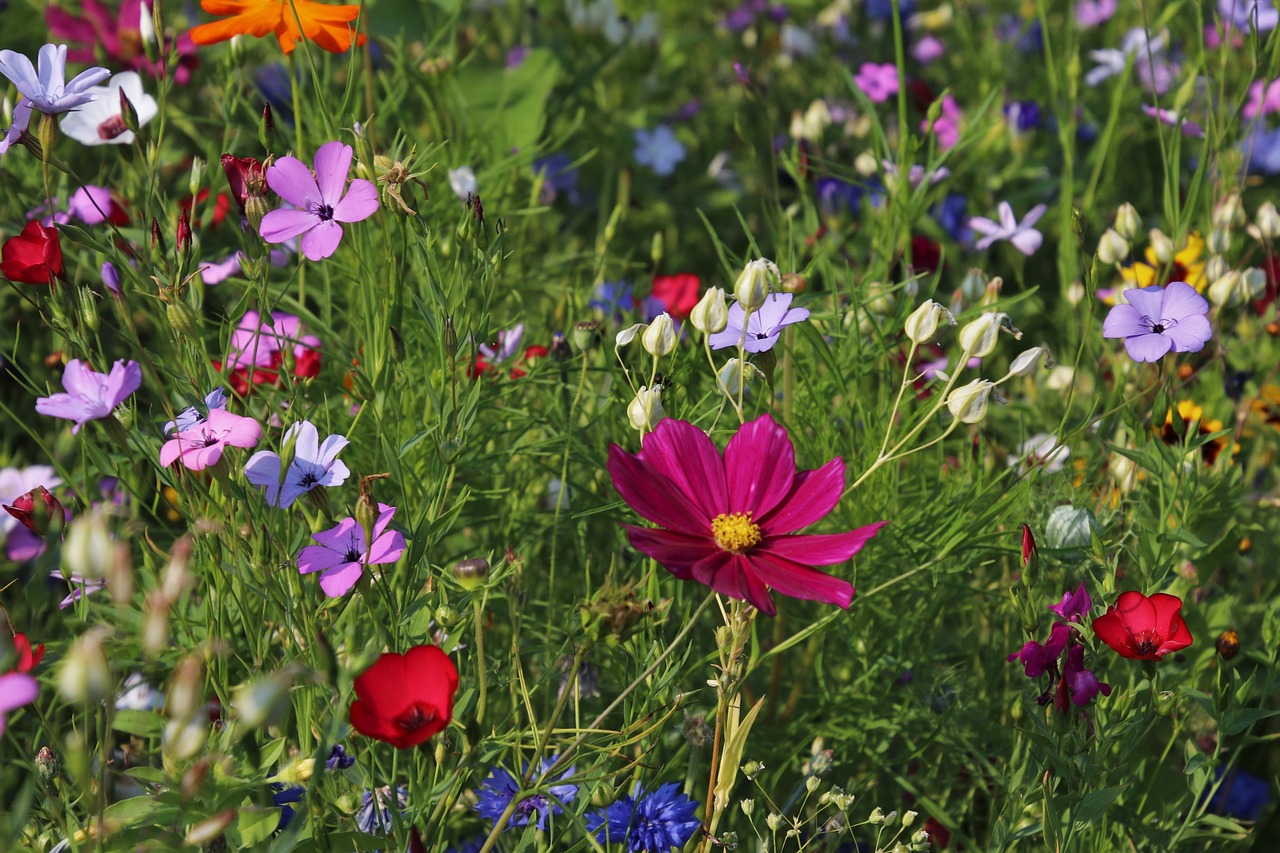
Understanding Light Requirements
When it comes to indoor gardening, understanding the light requirements of your plants is absolutely crucial. Just like humans need sunlight to feel energized and healthy, plants rely on light to grow, bloom, and thrive. Not all plants are created equal, and each variety has its own unique light needs. Some may flourish in bright, direct sunlight, while others prefer the gentle embrace of indirect light or even low-light conditions.
To create a successful indoor garden, it's essential to assess the light conditions in your space. Start by observing the natural light your area receives throughout the day. Consider factors such as:
- Window orientation: South-facing windows typically receive the most sunlight, while north-facing ones offer the least.
- Obstructions: Trees, buildings, or other structures can block sunlight, affecting how much light your plants get.
- Seasonal changes: The intensity and duration of sunlight can vary with the seasons, so keep this in mind when planning your indoor garden.
Once you have a good understanding of your indoor lighting situation, you can choose plants that will thrive in those conditions. For example, if your space is bathed in bright light, consider adding succulents or cacti, which love the sun. On the other hand, if you have a shadier spot, you might opt for snake plants or pothos, both of which are known for their ability to adapt to lower light levels.
It's also important to remember that light needs can vary not just by type of plant, but also by their growth stage. Seedlings often require more light than mature plants, which can sometimes get by with less. So, keep an eye on your plants and adjust their placement as needed.
In addition to understanding the quantity of light, consider the quality of light as well. Different wavelengths of light can affect plant growth in various ways. For instance, blue light is essential for vegetative growth, while red light can encourage flowering. If you find that natural light is insufficient for your indoor garden, you might want to think about supplementing with grow lights.
In conclusion, grasping the light requirements of your indoor plants is a fundamental step in establishing a thriving indoor garden. By observing your space and selecting the right plants for your lighting conditions, you can create a lush, vibrant environment that not only beautifies your home but also promotes a sustainable lifestyle.
Q: How can I tell if my plants are getting too much or too little light?
A: Signs of too much light include scorched leaves or faded colors, while too little light may cause yellowing leaves and leggy growth as plants stretch towards the light source.
Q: Can I use artificial lights for my indoor garden?
A: Absolutely! Grow lights can provide the necessary spectrum of light for your plants, especially in areas with limited natural sunlight.
Q: How often should I rotate my plants?
A: Rotating your plants every few weeks can help ensure they receive even light exposure and prevent them from leaning towards the light source.
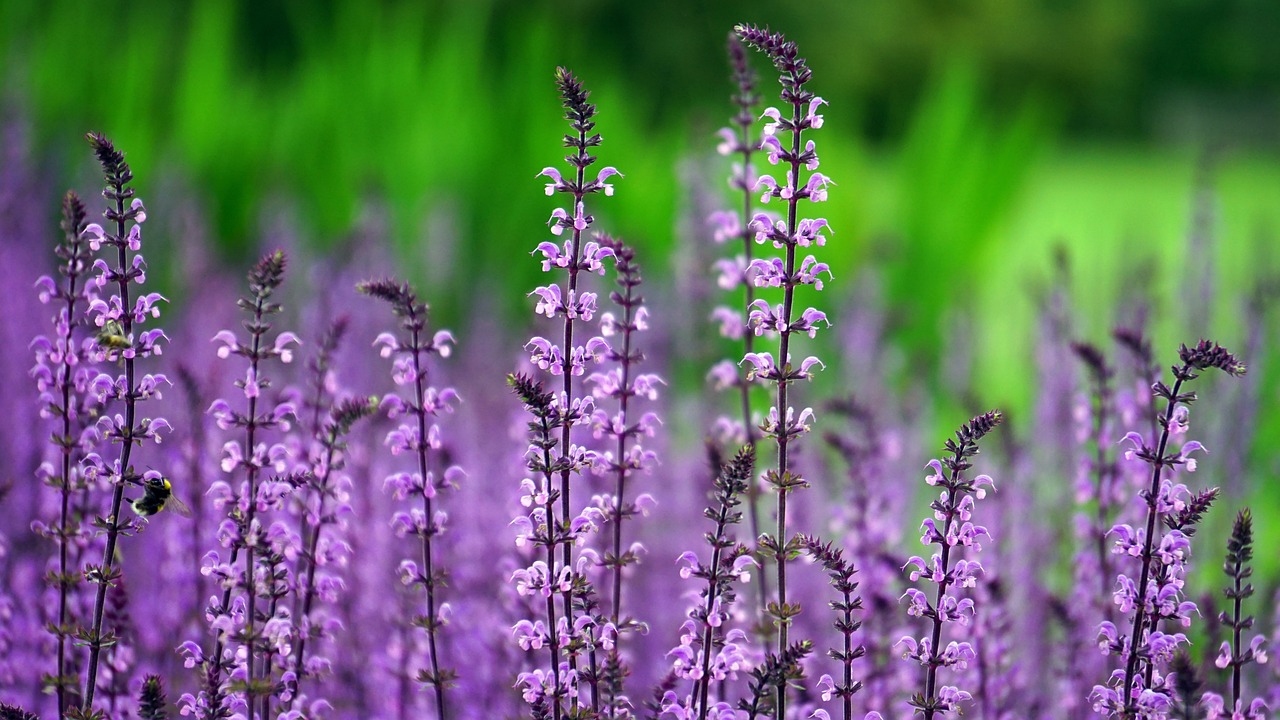
Using Reflective Surfaces
When it comes to maximizing the amount of natural light your indoor plants receive, the use of reflective surfaces can be a game changer. Imagine your indoor garden as a stage, and sunlight as the spotlight. To ensure your plants get the best performance, you need to enhance that spotlight. Reflective surfaces act like a mirror, bouncing light around the room and ensuring that every plant gets its fair share of sunshine.
One of the simplest ways to incorporate reflective surfaces is by using mirrors. Placing a mirror strategically across from a window can double the amount of light that reaches your plants. Not only does this create a more vibrant environment, but it also adds an aesthetic appeal to your indoor garden. If mirrors aren’t your style, consider using light-colored walls or surfaces. Light colors reflect sunlight better than dark colors, making them an excellent choice for enhancing light distribution.
Another fantastic option is to use reflective plant stands or trays. These can be made from materials like aluminum or polished metal, which are designed to reflect light. By elevating your plants on these stands, you not only improve drainage and airflow but also increase the amount of light they receive from above and around them. It’s a win-win situation!
To help you visualize the impact of reflective surfaces, consider the following table that compares the effectiveness of different materials in reflecting light:
| Material | Light Reflection (%) | Best Use |
|---|---|---|
| Mirrors | 90-95% | Maximizing sunlight in small spaces |
| White Paint | 80-90% | Wall colors for light enhancement |
| Aluminum Foil | 75-80% | Temporary solutions or DIY reflectors |
| Light-Colored Surfaces | 60-70% | General room decor |
In addition to improving light distribution, reflective surfaces can also help create a more inviting atmosphere in your indoor garden. The interplay of light and reflection can make your space feel larger and more open, which is particularly beneficial if you're working with limited square footage. Plus, the aesthetic appeal of shiny surfaces can add a touch of elegance to your greenery, making your indoor garden a true focal point in your home.
So, next time you’re arranging your indoor garden, think about how you can incorporate reflective surfaces. Whether it’s through mirrors, light-colored walls, or reflective plant stands, enhancing light distribution can lead to healthier, happier plants that thrive in your eco-friendly oasis.
- How do reflective surfaces help indoor plants? Reflective surfaces bounce light around the room, allowing plants to receive more sunlight, which is essential for their growth.
- Can I use any type of mirror for this purpose? Yes, any mirror can work, but larger mirrors will generally provide more light reflection.
- Are there any downsides to using reflective surfaces? If not positioned correctly, mirrors can create hot spots that may scorch plants. It's essential to monitor your plants' reaction to the increased light.

Supplementing with Grow Lights
When natural light isn't quite enough to keep your indoor garden thriving, grow lights can be your best friends. These artificial light sources mimic the sun's rays, providing the essential light spectrum that plants need for photosynthesis. But before you rush out to buy the first grow light you see, let’s dive into what makes a good grow light and how to use it effectively.
First off, it's important to understand that not all grow lights are created equal. They come in various types, including LEDs, fluorescent lights, and high-intensity discharge (HID) lights. Each type has its own advantages and disadvantages, so let’s break it down:
| Type of Grow Light | Advantages | Disadvantages |
|---|---|---|
| LED | Energy-efficient, long lifespan, low heat output | Higher initial cost |
| Fluorescent | Inexpensive, good for seedlings and low-light plants | Shorter lifespan, less efficient for larger plants |
| HID | Very bright, excellent for flowering plants | High energy consumption, generates a lot of heat |
Now that you know the types, it’s crucial to think about how you position these lights. Aim to place your grow lights about 12 to 24 inches above your plants, depending on the light intensity. This distance helps prevent leaf burn while ensuring your plants receive adequate light. As your plants grow, you may need to adjust the height of the lights to keep that sweet spot.
Another key point to consider is the duration of light exposure. Most indoor plants thrive with about 12 to 16 hours of light per day. You can use a timer to automate this process, ensuring your plants get consistent light without the hassle of manual adjustments. Think of it as setting a bedtime for your plants; they need their beauty sleep too!
Lastly, don't forget about the color spectrum that your grow lights emit. Plants benefit from different wavelengths during various growth stages. For instance, blue light is fantastic for vegetative growth, while red light supports flowering and fruiting. Some advanced grow lights offer full-spectrum capabilities, which can be a one-stop solution for all your plants’ needs.
In summary, supplementing your indoor garden with grow lights can lead to remarkable growth and vitality. By choosing the right type of light, positioning it correctly, managing exposure time, and utilizing the appropriate color spectrum, you can create a flourishing indoor garden that thrives year-round, regardless of the natural light available. Remember, your plants are counting on you!
- Do I need grow lights for all indoor plants? Not all indoor plants require grow lights. Many low-light plants can thrive with indirect sunlight. However, if your space lacks natural light, grow lights can be beneficial.
- How long should I keep grow lights on? Aim for 12 to 16 hours of light per day for most indoor plants. Using a timer can help automate this process.
- Can I use regular light bulbs instead of grow lights? Regular light bulbs do not emit the necessary light spectrum for plant growth. It's best to invest in proper grow lights for optimal results.

Creating a Balanced Environment
Creating a balanced environment for your indoor garden is like setting the stage for a beautiful performance; every element must work in harmony to ensure your plants thrive. The key components to focus on are humidity and temperature. These factors play a crucial role in the health and growth of your indoor plants, and getting them right can make all the difference between a flourishing garden and a struggling one.
First up, let's talk about humidity. Most indoor plants prefer a humidity level between 40% and 60%. If the air in your home is too dry, especially during winter months, your plants may suffer. You can increase humidity by using a humidifier, placing a tray of water near your plants, or even grouping plants together. When plants are close, they create a microclimate that retains moisture, almost like a cozy little community. Additionally, misting your plants occasionally can also help boost humidity levels.
Next, temperature is equally important. Most indoor plants thrive in temperatures ranging from 65°F to 75°F during the day, with a slight drop at night. Avoid placing your plants near drafts, heaters, or air conditioning vents, as these can create temperature fluctuations that stress your plants. Instead, find a stable spot with consistent warmth and light. Think of it as providing your plants with their very own climate zone where they feel safe and comfortable.
To help you visualize the ideal conditions for your indoor garden, here’s a simple table that summarizes the optimal humidity and temperature levels:
| Plant Type | Optimal Humidity | Optimal Temperature |
|---|---|---|
| Ferns | 60% - 70% | 65°F - 75°F |
| Succulents | 30% - 50% | 70°F - 80°F |
| Herbs | 40% - 60% | 65°F - 75°F |
Another aspect to consider is air circulation. Plants need fresh air to thrive, just like we do. Stagnant air can lead to mold and pest problems. A simple fan can help improve air circulation without creating harsh drafts. Just be sure to set it on a low setting so it gently moves the air around your plants, creating a refreshing breeze that keeps them happy.
In summary, creating a balanced environment for your indoor garden is about finding that sweet spot where humidity, temperature, and air circulation come together. By paying attention to these elements, you can cultivate a thriving indoor oasis that not only enhances your living space but also contributes positively to your overall well-being.
- What is the best way to maintain humidity for indoor plants? Using a humidifier, misting plants, and grouping them together can help maintain the ideal humidity levels.
- How can I tell if my plants are getting the right temperature? Most indoor plants thrive in temperatures between 65°F and 75°F. If your plants are wilting or showing signs of stress, check for drafts or temperature fluctuations.
- Is it necessary to use a fan for air circulation? While not strictly necessary, a fan can help improve air circulation, reducing the risk of mold and pests.

Watering Wisely
When it comes to indoor gardening, is a crucial aspect that can make or break your plants’ health. Overwatering can lead to root rot, while underwatering can cause your plants to wilt and become stressed. So, how do you strike the perfect balance? It all starts with understanding your plants' specific needs and establishing a routine that conserves water while promoting healthy growth.
One of the most effective ways to ensure your plants receive just the right amount of water is to implement a consistent watering schedule. This means observing your plants closely and adjusting your watering frequency based on their individual requirements. For instance, some plants thrive on a weekly watering schedule, while others may need more frequent attention. A good rule of thumb is to check the top inch of soil; if it's dry, it’s time to water. This not only prevents overwatering but also helps you become more attuned to your plants’ needs.
In addition to a watering schedule, consider the benefits of collecting rainwater. This sustainable practice not only reduces your water bill but also provides your plants with fresh, chemical-free water. Setting up a simple rainwater collection system can be as easy as placing a barrel under your downspout. You can then use this collected water to nourish your indoor garden, making it a win-win for both your plants and the environment.
For those who are new to indoor gardening, it might be helpful to keep a watering log. This log can include details such as the type of plant, the date it was watered, and any observations about its health. Over time, this will help you identify trends and adjust your watering practices accordingly. Here’s a simple example of what your watering log might look like:
| Plant Name | Watering Date | Soil Moisture Level | Notes |
|---|---|---|---|
| Spider Plant | 2023-10-01 | Dry | Needs watering more frequently |
| Peace Lily | 2023-10-02 | Moist | Healthy growth |
By monitoring and adapting your watering practices, you can create a thriving indoor garden that not only looks beautiful but also contributes to a more sustainable lifestyle. Remember, the key is to observe, learn, and adjust your methods as needed. With patience and care, your plants will thank you for the attention you give them!
- How often should I water my indoor plants? It depends on the type of plant and the environmental conditions. Generally, check the top inch of soil; if it's dry, it's time to water.
- Can I use tap water for my indoor garden? Yes, but letting it sit for 24 hours can help dissipate chlorine and other chemicals.
- What are the signs of overwatering? Yellowing leaves, wilting, and a sour smell from the soil are common signs of overwatering.
- Is rainwater better for plants than tap water? Yes, rainwater is typically free of chemicals and is often more beneficial for plant growth.

Implementing a Watering Schedule
Establishing a consistent watering schedule is essential for the health of your indoor plants. Just like humans need a balanced diet and regular meals, plants thrive on a routine that meets their specific hydration needs. Overwatering can lead to root rot, while underwatering can cause stress and stunted growth. So, how do you strike the perfect balance? It all starts with understanding your plants' requirements.
First, consider the type of plants you have. Each species has its own watering needs based on factors like size, type of soil, and environmental conditions. For instance, succulents and cacti prefer drier conditions, while tropical plants might need more moisture. To help you remember, you can create a simple table that outlines the watering frequency for each plant type:
| Plant Type | Watering Frequency |
|---|---|
| Succulents | Every 2-3 weeks |
| Tropical Plants | Weekly |
| Ferns | Every 5-7 days |
| Herbs | Every 3-5 days |
Next, it's important to observe your plants closely. Check the top inch of the soil; if it feels dry, it’s time to water. If it’s still moist, hold off for a few more days. This practice not only helps you avoid overwatering but also encourages you to connect with your plants on a deeper level. Think of it as developing a relationship where you learn to read their signals and respond accordingly.
Another effective strategy is to set reminders on your phone or use a calendar to keep track of when each plant needs watering. This way, you can ensure that no plant is neglected. You might even consider creating a watering log where you jot down the date and amount of water given to each plant. This can be a fun way to engage with your indoor garden and allows you to see patterns over time, making it easier to adjust your schedule as needed.
Lastly, remember that environmental factors such as temperature and humidity can also affect how often you need to water your plants. During the warmer months, you might find that your plants require more frequent watering, while in cooler months, they may need less. Keeping an eye on these changes will help you maintain a thriving indoor garden that is both beautiful and sustainable.
In summary, implementing a watering schedule is not just about routine; it’s about understanding your plants and their unique needs. By observing, recording, and adjusting your practices, you can create a harmonious environment that supports healthy growth and minimizes waste.
- How often should I water my indoor plants? It depends on the type of plant. Generally, check the soil moisture and water when the top inch is dry.
- Can I use tap water for my indoor plants? Yes, but letting the water sit for 24 hours can help reduce chlorine levels, which can be harmful to some plants.
- What should I do if I overwater my plants? If you suspect overwatering, remove the plant from its pot and let the roots dry out before repotting it in fresh soil.
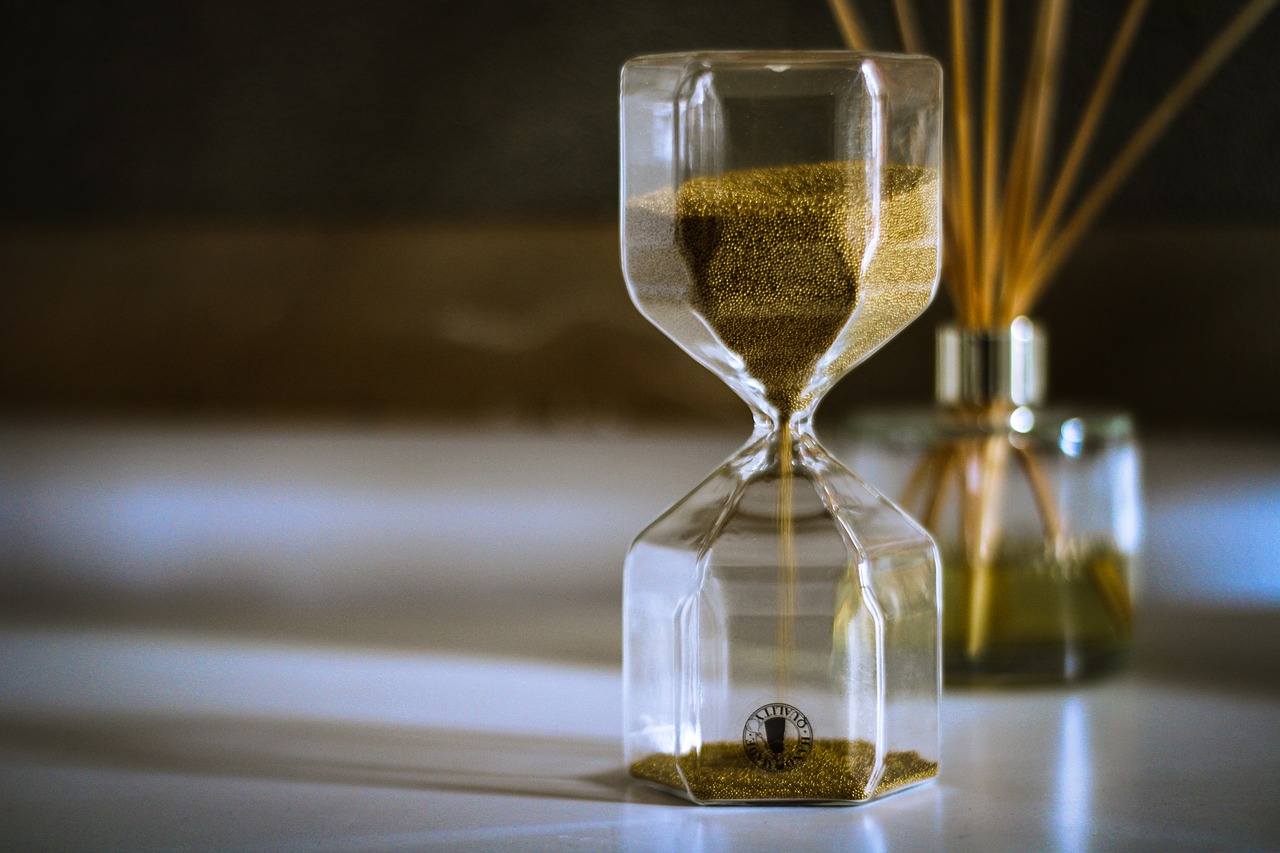
Using Rainwater Collection
Collecting rainwater is not just an eco-friendly practice; it’s a smart way to nourish your indoor garden while conserving precious resources. Imagine this: every time it rains, you have a free source of water just waiting to be captured! By setting up a simple rainwater collection system, you can significantly reduce your reliance on municipal water supplies, which is not only good for your plants but also for the environment.
To get started, you’ll need a few basic materials. A rain barrel is ideal, but you can also use large buckets or containers. Position these containers under your downspouts or in areas where rainwater naturally flows. When the rain falls, it will fill your containers, providing you with a sustainable water source. The best part? This water is often softer and free from chemicals found in tap water, making it even better for your plants!
Here are some tips to ensure your rainwater collection system is effective:
- Choose the Right Location: Place your rain barrels in shaded areas to minimize evaporation and keep the water cooler.
- Use a Filter: Installing a mesh screen at the top of your barrel will help keep out debris and prevent mosquitoes from breeding.
- Connect a Hose: Adding a hose to your rain barrel can make it easier to water your plants efficiently.
Additionally, it's essential to consider the size of your collection system. A larger barrel can hold more water, but it may take longer to fill. Conversely, smaller containers may fill quickly but require more frequent emptying. You can also create a network of barrels connected by a simple hose system to maximize your collection capacity.
Remember, rainwater collection is not just about saving water; it's about embracing a sustainable lifestyle. By using rainwater to nourish your indoor garden, you’re not only helping your plants thrive but also contributing to a healthier planet. Plus, the satisfaction of knowing you’re making a positive impact can be incredibly rewarding!
1. Is rainwater safe for my indoor plants?
Yes, rainwater is typically safe for indoor plants as it is free from the chemicals often found in tap water, such as chlorine and fluoride. However, make sure to keep your collection system clean to avoid contamination.
2. How do I prevent mosquitoes from breeding in my rain barrel?
Using a mesh screen to cover the top of your rain barrel will help keep mosquitoes out. Additionally, regularly emptying and cleaning your barrel can prevent any stagnant water accumulation.
3. Can I use rainwater for other household needs?
Absolutely! Rainwater can be used for various purposes, including watering outdoor gardens, washing cars, or even flushing toilets, depending on local regulations.
4. How much rainwater can I expect to collect?
The amount of rainwater you can collect depends on the size of your roof and the amount of rainfall in your area. A general estimate is that one inch of rain on a 1,000 square foot roof can yield about 600 gallons of water.

Composting for Nutrient-Rich Soil
Composting is not just a trend; it’s a sustainable lifestyle choice that can transform your kitchen scraps and yard waste into nutrient-rich soil for your indoor garden. Imagine turning your banana peels, coffee grounds, and vegetable scraps into a rich, dark compost that nourishes your plants! Not only does this practice help in reducing waste, but it also enhances the health of your plants by providing them with essential nutrients. The beauty of composting lies in its simplicity and effectiveness, making it an ideal practice for anyone looking to create an eco-friendly indoor garden.
To get started, you need to understand the basics of composting. It involves a natural process where organic materials decompose over time, breaking down into a rich soil amendment. There are various composting methods you can choose from, depending on your space and lifestyle. Here are some popular methods:
- Bokashi Composting: This method uses a fermentation process to break down food scraps, making it a quick and odorless option for indoor composting.
- Vermicomposting: Utilizing worms to decompose organic waste, this method produces a highly nutrient-rich compost known as worm castings.
- Traditional Composting: A simple pile or bin method where green (nitrogen-rich) and brown (carbon-rich) materials are layered and turned regularly.
Each method has its pros and cons, so it’s essential to choose one that suits your indoor environment. For instance, if you have limited space, vermicomposting might be the best option, as it requires minimal space and can be done indoors. On the other hand, traditional composting is perfect if you have a bit more room and want to process larger quantities of waste.
Once you’ve chosen a composting method, maintaining your compost is crucial for success. Here are some tips to keep your compost healthy:
| Tip | Description |
|---|---|
| Balance Your Greens and Browns | Ensure you have a good mix of nitrogen-rich greens (like fruit scraps) and carbon-rich browns (like dried leaves) for optimal decomposition. |
| Keep it Aerated | Turn your compost regularly to introduce oxygen, which helps speed up the decomposition process. |
| Monitor Moisture Levels | Your compost should be damp but not soggy. If it’s too dry, add water; if too wet, add more browns. |
By following these practices, you’ll not only be creating an excellent compost for your indoor plants but also contributing to a more sustainable environment. Remember, composting is a journey, and every little bit helps in reducing waste and enriching your indoor garden. So, roll up your sleeves, get your compost bin ready, and let nature work its magic!
1. What can I compost indoors?
You can compost fruit and vegetable scraps, coffee grounds, eggshells, and even shredded paper. Avoid meat, dairy, and oily foods as they can attract pests.
2. How long does it take to make compost?
Depending on the method, composting can take anywhere from a few weeks to several months. Vermicomposting is usually the fastest.
3. Can I compost if I live in an apartment?
Absolutely! Methods like vermicomposting and Bokashi composting are perfect for small spaces and can be done indoors.
4. How do I know when my compost is ready?
Your compost is ready when it looks dark, crumbly, and has an earthy smell. It should no longer resemble the original materials you added.
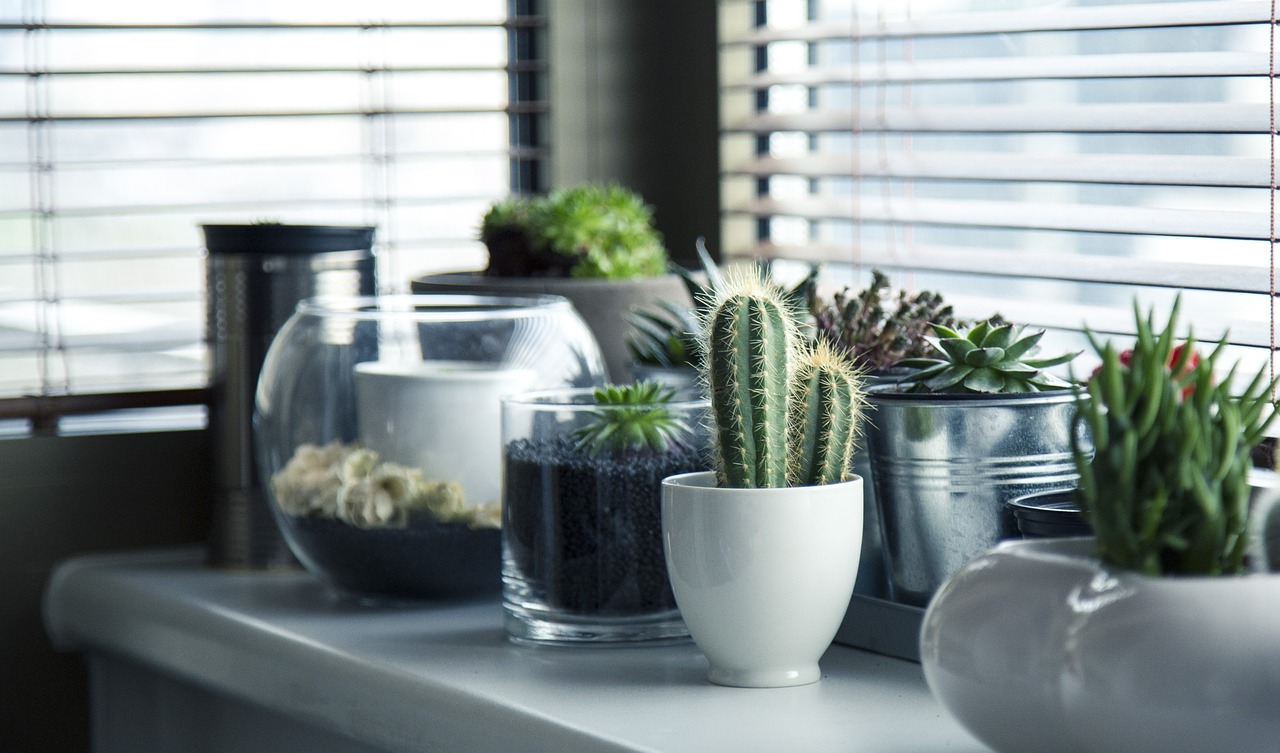
Types of Composting Methods
Composting is an essential practice for anyone looking to create a sustainable indoor garden. By recycling organic waste into nutrient-rich soil, you not only reduce waste but also enrich your plants’ growing environment. There are several composting methods that can be adapted to indoor settings, each with its own benefits and considerations. Understanding these methods will help you choose the one that best fits your lifestyle and space.
One popular method is vermicomposting, which involves using worms to break down organic material. This method is efficient and produces a potent fertilizer known as worm castings. Vermicomposting is particularly suited for small spaces and can be done in a compact bin. However, it requires careful management of moisture and temperature to keep the worms healthy.
Another method is bokashi composting, which uses a fermentation process to break down kitchen scraps. This method is unique because it allows you to compost meat and dairy products, which are typically not suitable for traditional composting. Bokashi composting is fast and odorless, making it ideal for indoor use. The fermented material can then be buried in soil to further decompose.
For those who prefer a more traditional approach, hot composting is another option. This method requires a larger space, as it involves layering green (nitrogen-rich) and brown (carbon-rich) materials to create heat. While hot composting is more suited for outdoor gardens, it can still be adapted for indoor use if you have a balcony or patio. It’s effective in producing compost relatively quickly, but it does require more effort and monitoring.
If you’re looking for a low-maintenance option, cold composting might be the way to go. This method involves simply piling up organic waste and letting it decompose over time. It requires little effort and is perfect for those who prefer a hands-off approach. However, the process can take longer, sometimes up to a year, before the compost is ready to use.
To help you choose the right method, here's a quick comparison table:
| Method | Space Required | Time to Compost | Maintenance Level | Suitable for Indoor Use |
|---|---|---|---|---|
| Vermicomposting | Small | 2-3 months | Low | Yes |
| Bokashi Composting | Small | 2-4 weeks | Low | Yes |
| Hot Composting | Medium to Large | 1-3 months | High | Limited |
| Cold Composting | Medium | 6-12 months | Very Low | Yes |
In conclusion, the right composting method for your indoor garden depends on your available space, the time you can dedicate, and your personal preferences. Each method has its unique benefits, and experimenting with them can be a rewarding experience in your journey towards sustainable gardening.
- What can I compost indoors? You can compost a variety of kitchen scraps such as vegetable peels, fruit scraps, coffee grounds, and eggshells. Avoid meat and dairy unless using bokashi composting.
- How often should I turn my compost? For methods like hot composting, turning the pile every few weeks helps aerate it and speeds up decomposition. Vermicomposting and bokashi do not require turning.
- Can I compost paper products? Yes, but ensure they are non-toxic and shredded. Avoid glossy or colored paper as they may contain harmful chemicals.
- How do I know when my compost is ready? Finished compost should be dark, crumbly, and have an earthy smell. It should no longer resemble the original materials.
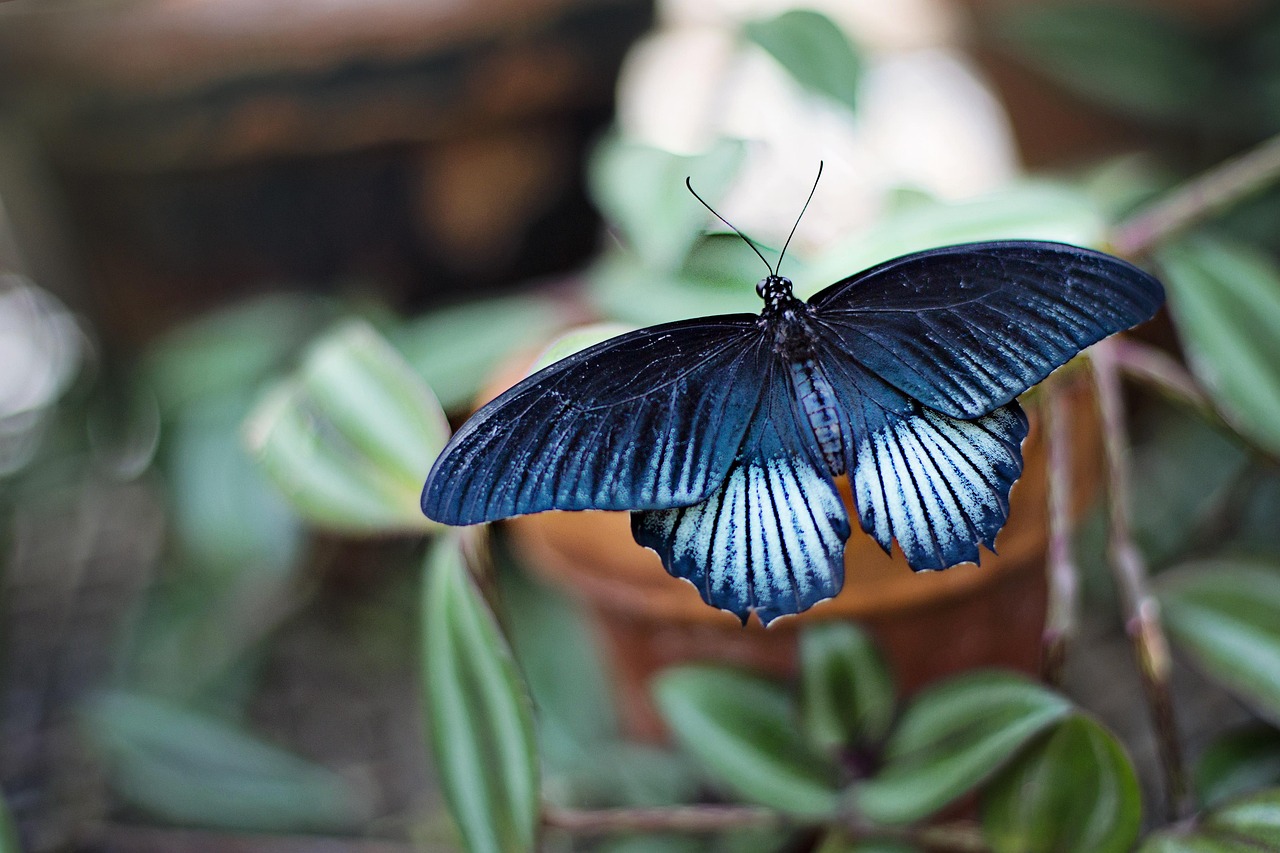
Maintaining Your Compost
Maintaining your compost is crucial to ensure it remains a rich source of nutrients for your indoor garden. Think of composting as a living ecosystem—just like any other garden, it requires care and attention to thrive. The first step in maintaining your compost is to monitor the balance of green materials (nitrogen-rich) and brown materials (carbon-rich). A good rule of thumb is to aim for a ratio of 2:1, with two parts brown materials to one part green materials. This balance not only helps in decomposition but also prevents unpleasant odors.
Next, it's essential to aerate your compost regularly. Aeration introduces oxygen, which is vital for the microorganisms breaking down the organic matter. You can do this by turning your compost with a pitchfork or shovel every couple of weeks. If you notice that your compost is compacted or has a foul smell, it might be a sign that it needs more aeration or a better balance of materials.
Another important aspect is moisture control. Your compost should be damp but not soggy. If it’s too dry, the decomposition process slows down; if it’s too wet, it can become anaerobic, leading to bad smells and pests. A simple test is to grab a handful of compost—if it crumbles in your hand, it’s too dry; if water drips out, it’s too wet. Aim for a consistency similar to a wrung-out sponge.
To help maintain the temperature of your compost, which should ideally be between 130°F and 160°F (54°C and 71°C), you can insulate your compost bin with straw bales or a compost blanket. This not only keeps your compost warm but also helps in speeding up the decomposition process. If you have a larger compost pile, consider using a thermometer to monitor the temperature, as this can give you insights into how well your compost is breaking down.
Lastly, be patient! Composting is a process that takes time. Depending on the materials used and the conditions, it can take anywhere from a few weeks to several months for your compost to be ready. When it is, you'll know because it will look dark, crumbly, and have an earthy smell. By following these maintenance tips, you’ll ensure that your compost is a thriving resource for your indoor garden, enriching your plants and contributing to a sustainable lifestyle.
- How often should I turn my compost? It's best to turn your compost every 2-4 weeks to aerate it and speed up the decomposition process.
- What materials can I add to my compost? You can add kitchen scraps like vegetable peels, coffee grounds, and eggshells, as well as yard waste like leaves and grass clippings.
- Can I compost meat or dairy products? It's generally not recommended to compost meat or dairy, as they can attract pests and create odors.
- How do I know when my compost is ready? Your compost is ready when it looks dark and crumbly, with an earthy smell, and you can no longer identify the original materials.
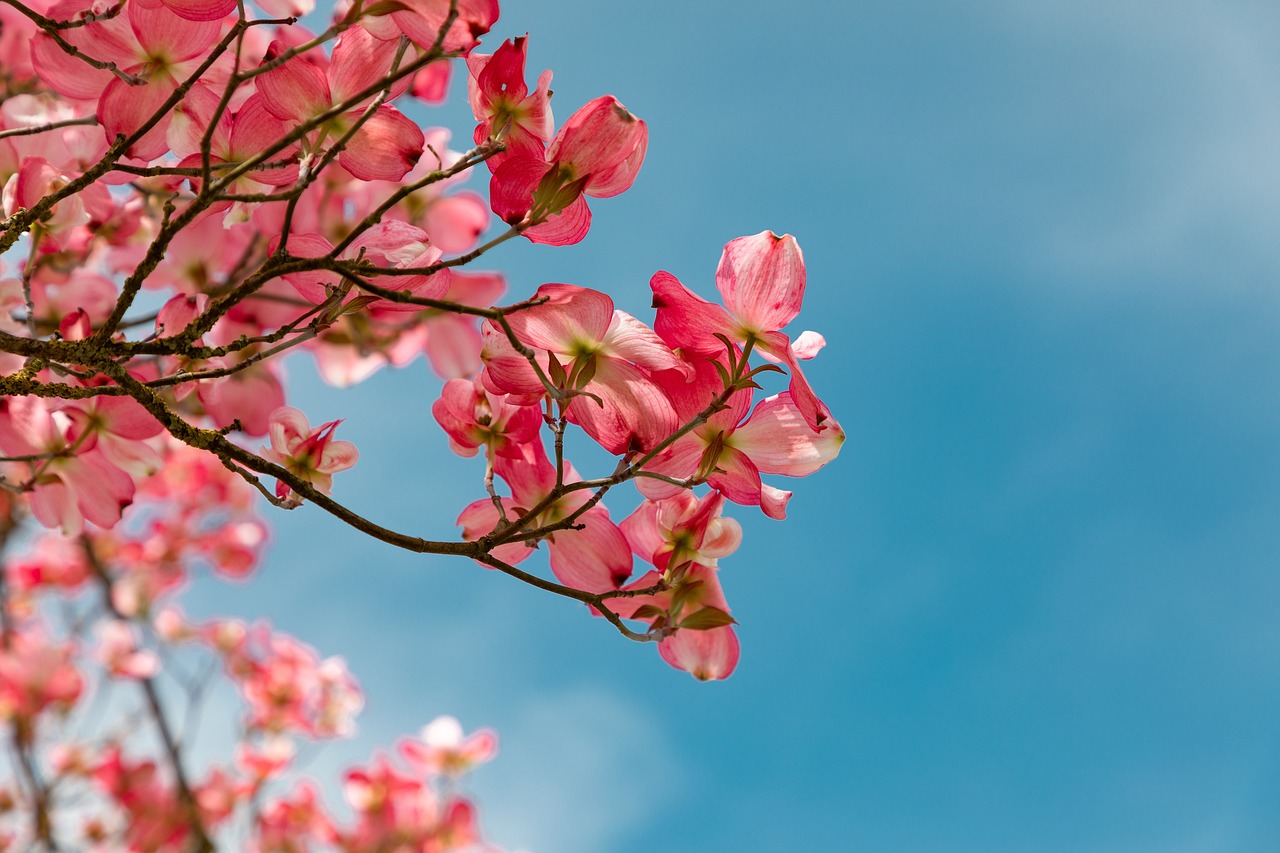
Eco-Friendly Pest Control
Managing pests sustainably is essential for maintaining a healthy indoor garden. You want to keep your plants flourishing without resorting to harsh chemicals that can harm the environment and your living space. The good news is that there are plenty of natural pest control methods that can effectively protect your plants while ensuring you’re being kind to Mother Earth. So, how do you tackle those pesky invaders without causing a ruckus?
First, it’s important to identify common indoor pests that may be lurking in your garden. Some of the most frequent offenders include aphids, spider mites, and mealybugs. Recognizing these pests early can save you a lot of trouble down the line. For instance, aphids are small, soft-bodied insects that often cluster on the undersides of leaves, while spider mites tend to create fine webs on the plant. If you notice yellowing leaves or stunted growth, it might be time to investigate further. By understanding what to look for, you can nip potential infestations in the bud.
Once you've identified the pests, you can turn to a variety of natural pest control solutions. Here are some effective strategies:
- Beneficial Insects: Introducing ladybugs or lacewings can help keep aphid populations in check, as these insects feast on them.
- Neem Oil: This natural pesticide disrupts the life cycle of pests and is safe for your plants and the environment.
- Homemade Sprays: A mixture of water and mild soap can suffocate soft-bodied insects when sprayed directly on them.
Furthermore, creating a balanced ecosystem within your indoor garden can naturally deter pests. For example, planting herbs like basil and mint can repel unwanted insects while also adding a lovely aroma to your space. Think of your indoor garden as a community; when you have a diverse range of plants, you create a natural defense system against pests.
Another crucial aspect of eco-friendly pest control is maintaining proper plant health. Healthy plants are less susceptible to infestations. This means providing adequate water, light, and nutrients, as well as ensuring good airflow around your plants. Sometimes, a little preventive care can go a long way in keeping pests at bay.
In case you do encounter a pest problem, remember that patience is key. Natural methods may take a bit longer to show results compared to chemical solutions, but they are far more sustainable in the long run. By adopting these eco-friendly pest control practices, you can enjoy a thriving indoor garden that is not only beautiful but also beneficial for the environment.
Q: What are some signs of pest infestation in indoor plants?
A: Common signs include yellowing leaves, stunted growth, webbing on plants, and visible insects on the foliage.
Q: Are natural pest control methods effective?
A: Yes, many natural methods can be quite effective, especially when combined with good plant care and regular monitoring.
Q: How can I prevent pests from entering my indoor garden?
A: Regularly inspect your plants, maintain good air circulation, and avoid overwatering to keep your indoor garden healthy and pest-free.
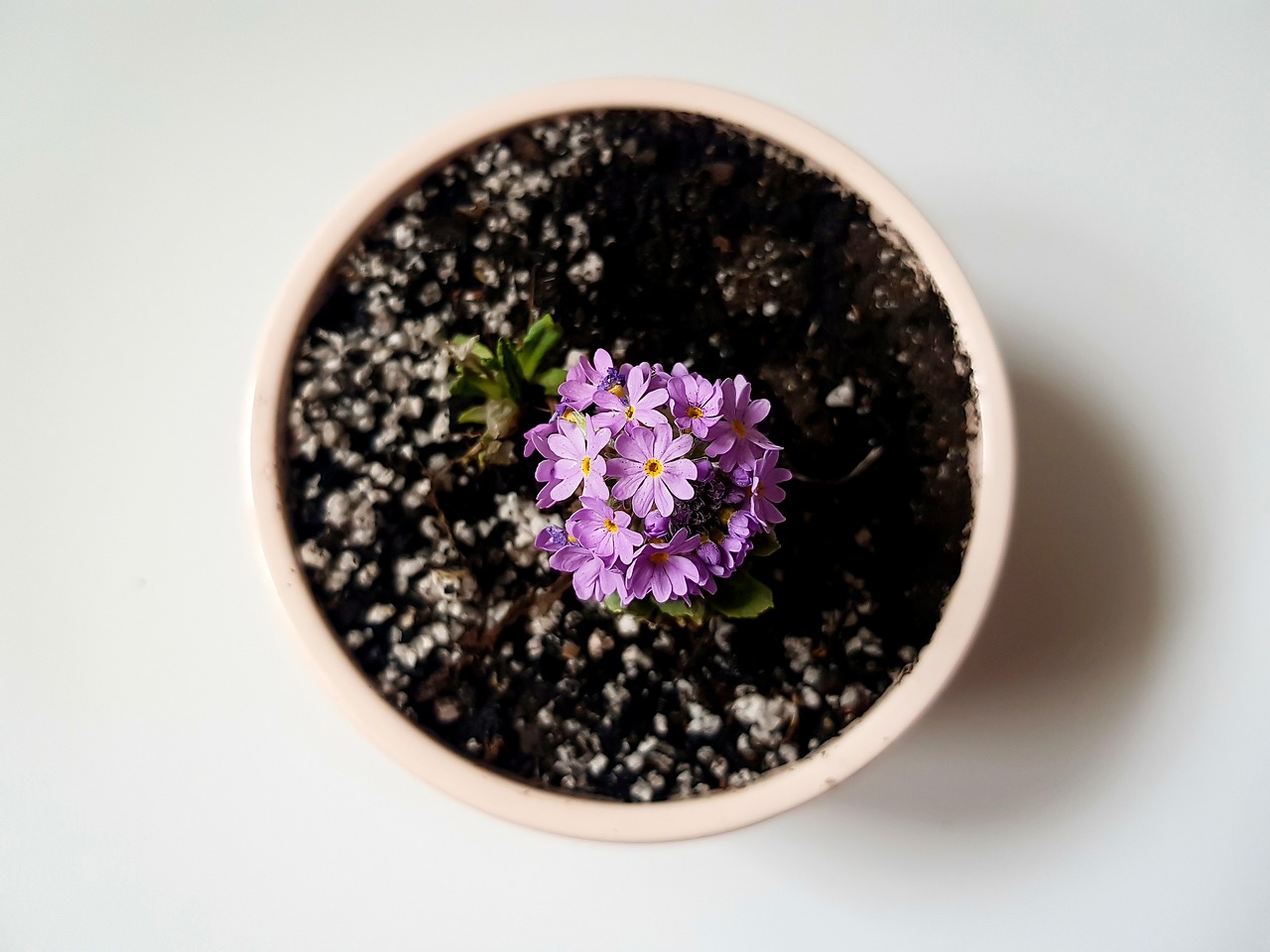
Identifying Common Indoor Pests
When it comes to maintaining a thriving indoor garden, one of the most crucial steps is . These uninvited guests can wreak havoc on your beloved plants if not managed promptly. But how do you know when your plants are under siege? Understanding the signs of infestation is key. For instance, you might notice yellowing leaves, wilting, or even a sticky residue on the leaves and surfaces around your plants. These could be telltale signs of pest problems.
Some of the most common indoor pests include:
- Aphids: Tiny, soft-bodied insects that often cluster on new growth. They can cause leaves to curl and deform.
- Spider Mites: These minuscule arachnids leave fine webs on the undersides of leaves and can cause significant damage if left unchecked.
- Mealybugs: Recognizable by their white, cottony appearance, these pests suck the sap from plants, leading to stunted growth.
- Fungus Gnats: Small, dark flies that hover around the soil. Their larvae can damage roots, especially in overwatered soil.
To effectively manage these pests, it’s essential to regularly inspect your plants. Look closely at the undersides of leaves and the soil surface. If you spot any pests, act quickly! You can use a damp cloth to wipe them off or spray your plants with a gentle insecticidal soap. Remember, early detection is crucial in preventing a full-blown infestation that could jeopardize your indoor garden.
By staying vigilant and familiarizing yourself with these common pests, you can protect your indoor oasis and ensure a healthy, flourishing environment for your plants. So, keep your eyes peeled and your plants happy!
Q: How often should I check my indoor plants for pests?
A: It's a good idea to inspect your plants at least once a week. Regular checks can help you catch any issues early before they escalate.
Q: What are some natural remedies for pest control?
A: You can use a mixture of water and mild soap to spray on affected plants. Neem oil is another effective natural remedy that deters pests while being safe for your plants.
Q: Can indoor plants get pests in the winter?
A: Yes, indoor plants can still attract pests during the winter months. The dry air and lack of natural predators can create a conducive environment for pests to thrive.
Q: Are all pests harmful to indoor plants?
A: Not all pests are harmful. Some insects can be beneficial, such as ladybugs, which feed on aphids. However, it’s essential to monitor their presence to maintain a balanced ecosystem.
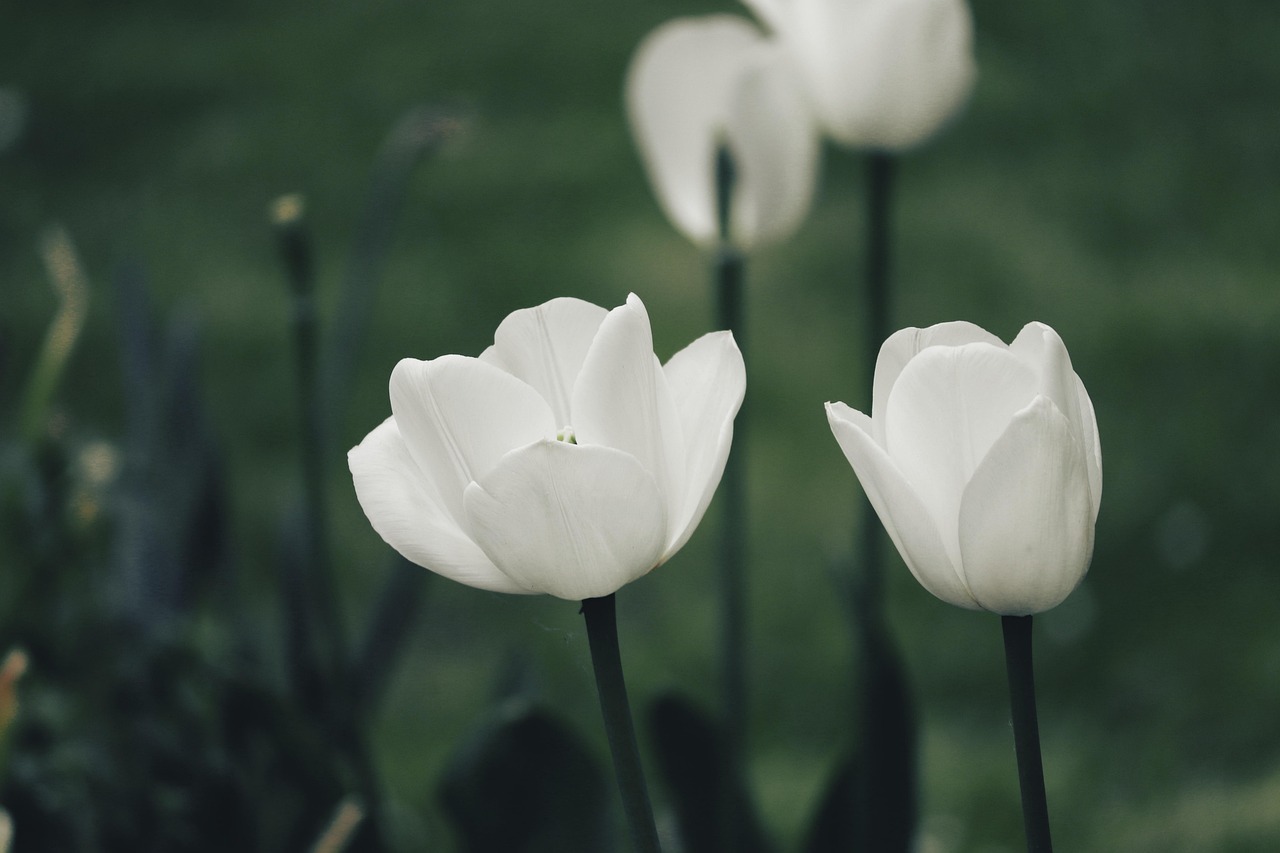
Natural Pest Control Solutions
This article provides practical advice for creating a sustainable indoor garden, focusing on eco-friendly practices, plant selection, and maintenance techniques that benefit both the environment and your living space.
Selecting plants that thrive indoors while being low-maintenance and eco-friendly is crucial. Discover which varieties are best suited for your indoor garden and how they contribute to a sustainable environment.
Maximizing natural light is essential for plant health. Learn how to position your indoor garden to take advantage of sunlight while minimizing energy consumption, leading to a more sustainable gardening approach.
Different plants have varying light needs. This section explores how to assess your plants' light requirements and how to create an optimal lighting environment for each type.
Incorporating reflective surfaces can enhance light distribution. Discover how mirrors and light-colored walls can help maximize sunlight for your indoor plants.
When natural light is insufficient, grow lights can be a sustainable solution. Learn about energy-efficient grow light options that can support your indoor garden without excessive energy use.
Maintaining humidity and temperature levels is vital for plant health. This section discusses how to create a balanced indoor environment that fosters growth while being eco-friendly.
Effective watering practices are crucial for an eco-friendly indoor garden. Explore techniques that conserve water and promote healthy plant growth while reducing waste.
Establishing a consistent watering schedule can prevent overwatering and underwatering. Learn how to create a schedule that meets your plants' needs while being mindful of water conservation.
Collecting rainwater is an eco-friendly practice that can significantly reduce your water usage. Discover how to set up a simple rainwater collection system for your indoor garden.
Composting is an excellent way to recycle organic waste into nutrient-rich soil. Learn how to start a composting system that supports your indoor plants while minimizing waste.
There are various composting methods suitable for indoor gardens. This section outlines the pros and cons of each method to help you choose the best fit for your space.
Proper maintenance is key to successful composting. Discover tips on how to keep your compost healthy, ensuring a steady supply of nutrients for your indoor garden.
Managing pests sustainably is essential for an indoor garden. Explore natural pest control methods that protect your plants without harming the environment or your indoor space.
Recognizing common pests that affect indoor plants is the first step in effective management. Learn how to identify these pests and their signs of infestation.
When it comes to maintaining a healthy indoor garden, are your best allies. Instead of reaching for harmful chemicals, consider using eco-friendly methods that not only protect your plants but also contribute to a healthier living environment. For instance, introducing beneficial insects like ladybugs and lacewings can be a game-changer. These tiny warriors feast on common pests such as aphids and spider mites, helping to keep your garden thriving.
Another effective approach is to use organic sprays made from natural ingredients. Neem oil, for example, is a fantastic option that disrupts the life cycle of pests while being safe for your plants. You can easily mix a few drops with water and spray it on affected areas to deter unwanted visitors. Additionally, creating a barrier using diatomaceous earth can be a simple yet effective method to keep pests at bay. This natural powder works by dehydrating insects that come into contact with it.
Using companion planting is yet another strategy you might find interesting. By planting certain species together, you can naturally repel pests. For example, marigolds are known to deter nematodes and aphids, making them a great companion for your vegetables. This not only enhances your garden's biodiversity but also reduces the need for chemical interventions.
In summary, embracing these not only helps in managing pests but also aligns with your eco-friendly gardening goals. By fostering a balanced ecosystem, you can create a thriving indoor garden that is both beautiful and sustainable.
Indoor gardening offers numerous benefits, including improved air quality and enhanced mental well-being. Explore the positive impacts of cultivating an eco-friendly indoor garden on your health and environment.
Indoor plants can significantly improve air quality by filtering pollutants. Learn how specific plants contribute to a healthier indoor atmosphere.
Gardening has therapeutic benefits that can enhance mental well-being. Discover how nurturing plants can reduce stress and promote a sense of tranquility in your home.
Q: What are the best indoor plants for beginners?
A: Some great options for beginners include pothos, snake plants, and peace lilies. They are low-maintenance and forgiving.
Q: How often should I water my indoor plants?
A: It depends on the plant species and the environment. A general rule is to check the top inch of soil; if it's dry, it's time to water.
Q: Can I use regular garden soil for indoor plants?
A: It's best to use potting soil specifically designed for indoor plants, as it provides better drainage and aeration.
Q: How can I tell if my indoor plants are getting enough light?
A: If your plants are stretching towards the light or have pale leaves, they may need more light. Conversely, scorched leaves can indicate too much direct sunlight.
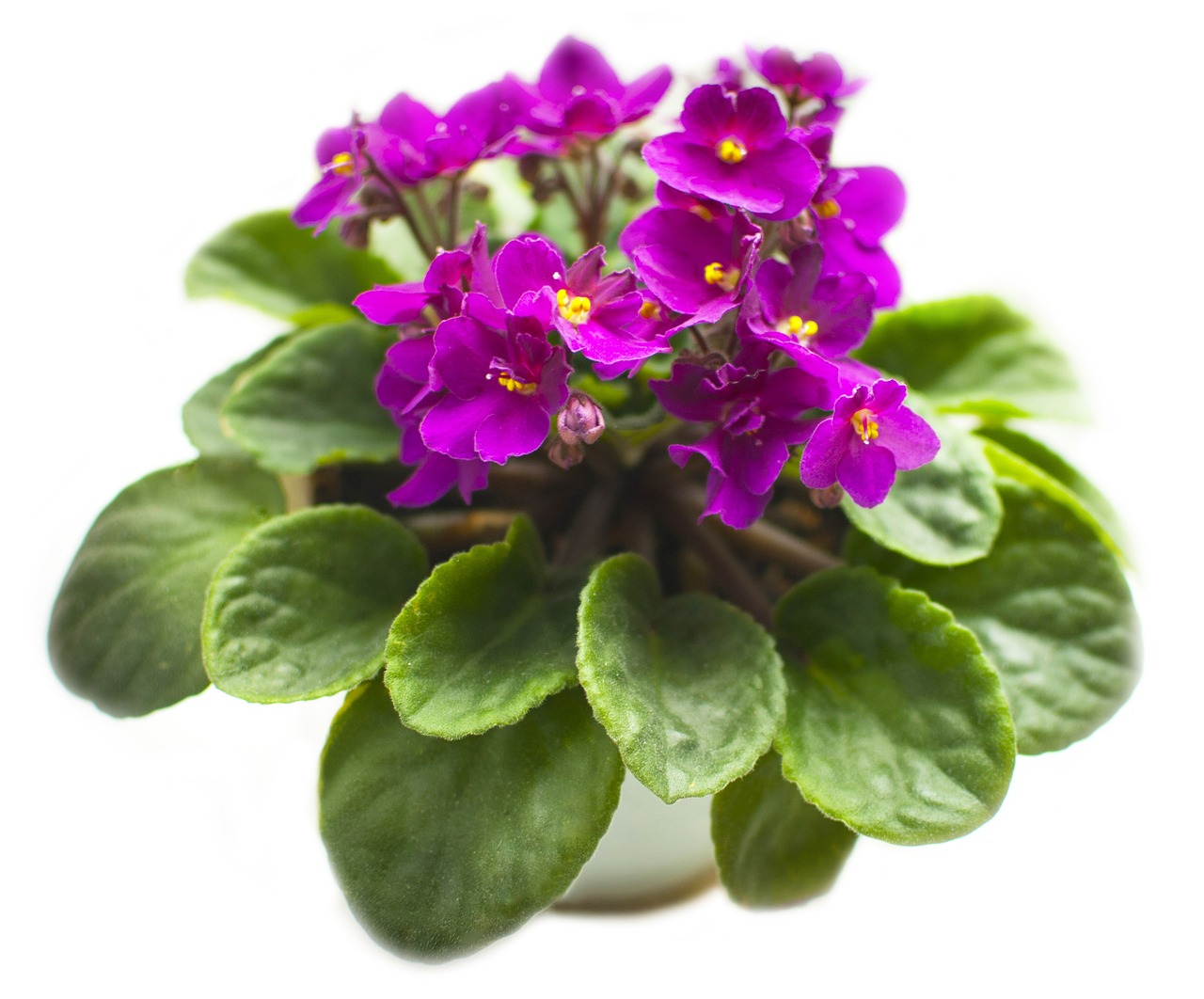
Benefits of Indoor Gardening
Indoor gardening isn't just about beautifying your space; it brings a plethora of benefits that can significantly enhance your quality of life. Imagine stepping into a room filled with lush greenery, where the air feels fresher and your mood instantly lifts. That's the magic of cultivating an indoor garden! Not only does it create a serene atmosphere, but it also contributes to your overall well-being in ways you might not have considered.
One of the most notable benefits of indoor gardening is improved air quality. Indoor plants act as natural air purifiers, filtering out harmful pollutants and releasing oxygen. For instance, plants like the Peace Lily and Spider Plant are known for their ability to absorb toxins such as formaldehyde and benzene. By incorporating these green companions into your home, you can create a healthier living environment. Here’s a quick look at some plants that can help purify your air:
| Plant Name | Air Quality Benefit |
|---|---|
| Peace Lily | Removes formaldehyde, benzene, and carbon monoxide |
| Spider Plant | Filters out formaldehyde and xylene |
| Snake Plant | Releases oxygen at night, improving air quality while you sleep |
Moreover, tending to your indoor garden can have profound effects on your mental well-being. Engaging with plants has been shown to reduce stress and anxiety levels. The act of watering, pruning, and nurturing your plants can be a form of mindfulness, allowing you to focus on the present moment. Just think about it: when was the last time you felt overwhelmed while potting a new plant or watching a seedling sprout? The simple joy of growth can be incredibly therapeutic.
Another benefit worth mentioning is the boost in creativity and productivity that comes from having plants around. Studies have shown that people who work in environments enriched with greenery tend to be more productive and creative. The presence of plants can stimulate the mind, making it easier to think outside the box. So, if you're working from home, consider adding a few plants to your workspace to help spark those creative juices!
Additionally, indoor gardening promotes sustainability. By growing your own herbs, vegetables, or fruits indoors, you reduce your carbon footprint and reliance on store-bought produce, which often comes with excessive packaging and transportation emissions. Imagine snipping fresh basil for your pasta or plucking ripe tomatoes from your indoor garden. Not only do you get to enjoy the fruits of your labor, but you also contribute to a more sustainable lifestyle.
Finally, let’s not forget the joy of connection that comes with indoor gardening. Whether you’re sharing tips with friends, exchanging plants, or simply enjoying the beauty of your own little green sanctuary, indoor gardening fosters a sense of community. It’s a hobby that can be shared and enjoyed with others, creating bonds over shared interests and experiences.
- What are some easy plants for beginners?
Some great beginner plants include pothos, snake plants, and peace lilies. They are low-maintenance and thrive in various indoor conditions.
- How often should I water my indoor plants?
It depends on the plant type, but a general rule of thumb is to check the top inch of soil; if it's dry, it's time to water.
- Can indoor plants really improve air quality?
Yes! Many indoor plants can filter out toxins and improve overall air quality.
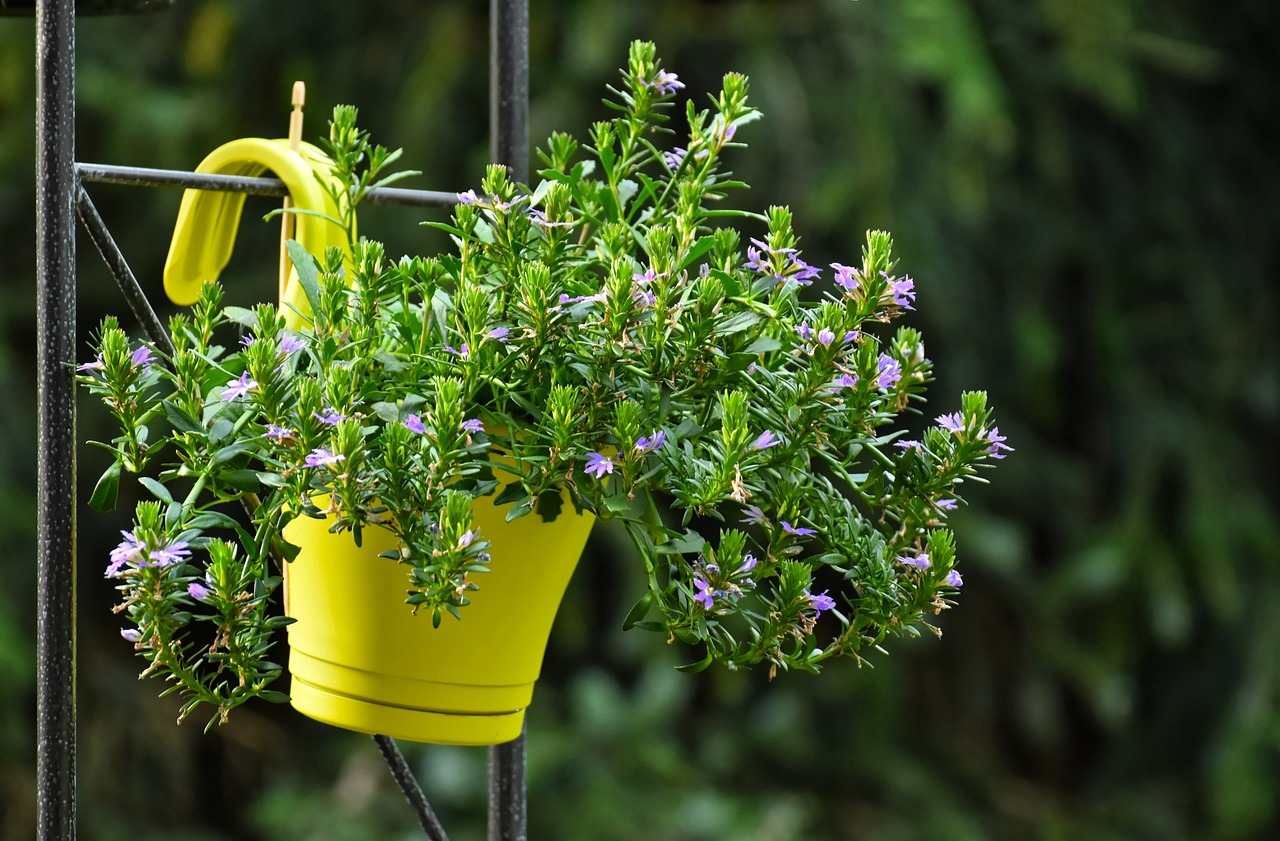
Improving Air Quality
Indoor gardening is not just about beautifying your space; it plays a crucial role in enhancing air quality. Did you know that certain plants can filter out harmful toxins from the air? By introducing these green companions into your home, you can create a sanctuary that promotes better health and well-being. The air inside our homes can be more polluted than the air outside, often due to chemicals from household products, building materials, and even furniture. This is where indoor plants come to the rescue!
Plants like spider plants, peace lilies, and snake plants are not only easy to care for but also incredibly effective at purifying the air. For instance, studies have shown that peace lilies can remove toxins such as formaldehyde and benzene, which are often found in household items. Incorporating these plants into your indoor garden can significantly reduce the concentration of these harmful substances, leading to a healthier living environment.
Moreover, plants improve air quality by increasing humidity levels. As they release moisture through a process called transpiration, they can help alleviate dry air, particularly during winter months when heating systems can dry out indoor spaces. This added humidity is beneficial for your skin, respiratory health, and even your plants, creating a balanced ecosystem within your home.
To give you a clearer picture, here's a table highlighting some popular indoor plants and their air-purifying benefits:
| Plant Name | Toxins Removed | Care Level |
|---|---|---|
| Spider Plant | Formaldehyde, Xylene | Easy |
| Peace Lily | Ammonia, Benzene, Formaldehyde | Moderate |
| Snake Plant | Formaldehyde, Nitrogen Oxides | Easy |
| Aloe Vera | Formaldehyde, Benzene | Easy |
| Boston Fern | Formaldehyde, Xylene | Moderate |
In addition to the physical benefits, the act of nurturing plants can have profound psychological effects. Engaging with your indoor garden can reduce stress and anxiety, making your living space not just a home, but a healing environment. The simple act of watering your plants or watching them grow can provide a sense of accomplishment and connection to nature, which is often missing in our fast-paced urban lives.
So, if you're looking to improve your indoor air quality while enjoying the numerous benefits of gardening, consider adding some of these air-purifying plants to your collection. Not only will they brighten up your space, but they will also work tirelessly to cleanse the air you breathe, making your home a healthier place to live.
- How many plants do I need to improve indoor air quality? Generally, having one plant per 100 square feet of space can help improve air quality significantly.
- Can I keep indoor plants in low light? Yes, many plants thrive in low light conditions, such as the snake plant and pothos.
- Do I need to care for indoor plants differently than outdoor plants? Yes, indoor plants often require less water and can be affected by indoor humidity levels.
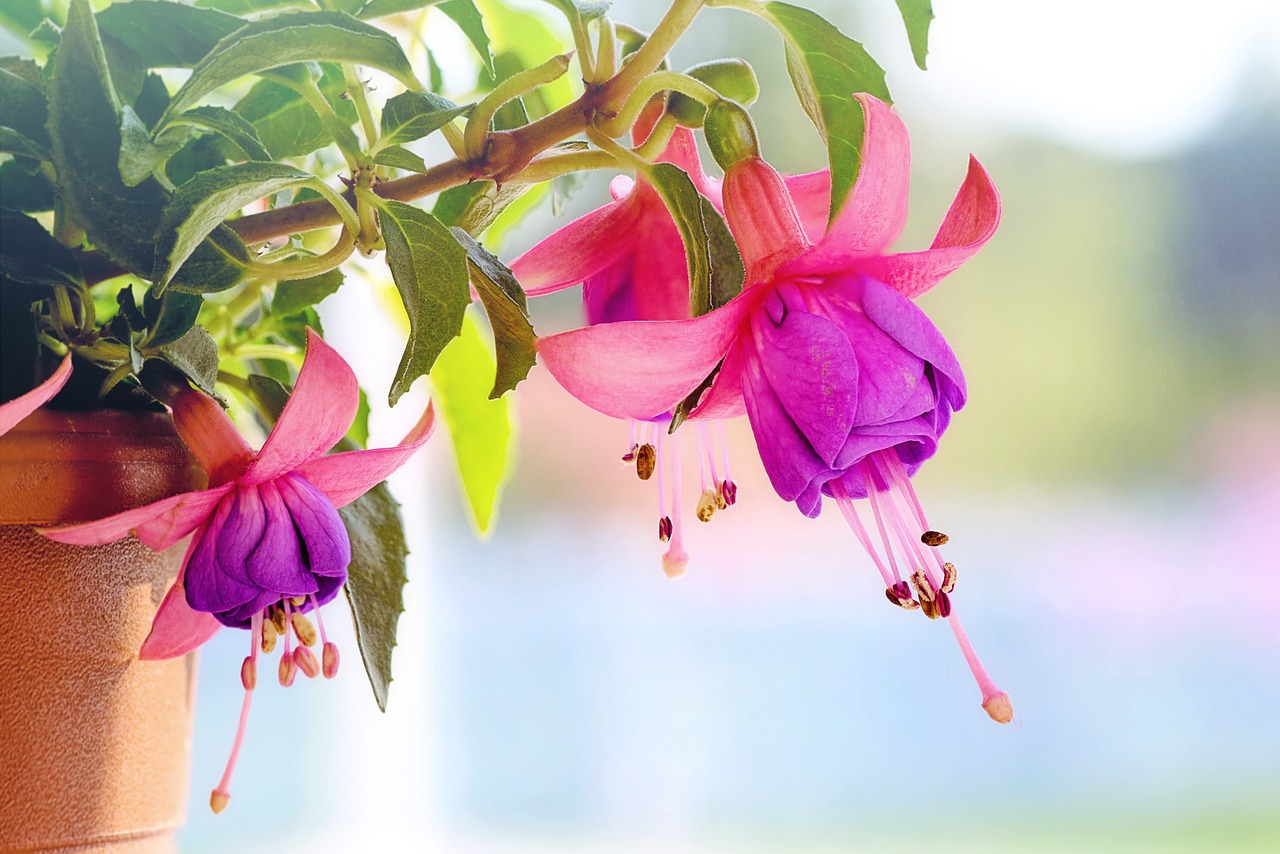
Enhancing Mental Well-Being
Gardening isn't just about nurturing plants; it's a powerful tool for enhancing your mental well-being. The act of tending to your indoor garden can be incredibly therapeutic, offering a sense of purpose and accomplishment. Just think about it: when you water your plants, prune their leaves, or watch them grow, you’re not just caring for them; you’re also creating a sanctuary for yourself. This connection with nature can significantly reduce stress levels and promote a sense of tranquility in your home.
Research has shown that spending time with plants can improve mood and increase feelings of happiness. The simple act of being around greenery has a calming effect, almost like a natural anti-anxiety remedy. It’s fascinating how something as simple as a potted fern or a vibrant peace lily can transform your living space into a peaceful oasis. Moreover, engaging with your plants can serve as a form of mindfulness, allowing you to focus on the present moment and escape the hustle and bustle of daily life.
To further illustrate the benefits, consider these aspects:
- Stress Relief: Interacting with plants can lower levels of cortisol, the stress hormone, helping you feel more relaxed.
- Boosted Creativity: A green environment stimulates creativity, making it easier to think outside the box.
- Enhanced Focus: Studies suggest that being around plants can improve concentration and cognitive function.
Additionally, caring for plants can foster a sense of responsibility and achievement. Watching your plants thrive under your care reinforces positive feelings and boosts self-esteem. It's like having a little cheer squad in your home that reminds you of your capabilities. Plus, the beauty of indoor gardening is that it’s accessible to everyone, regardless of space or experience. Whether you have a sprawling collection or just a single succulent, every bit counts towards enhancing your mental well-being.
So, if you’re looking for a way to uplift your spirits and create a peaceful retreat within your home, consider diving into the world of indoor gardening. Not only will you reap the rewards of a beautiful space, but you’ll also nurture your mind and soul in the process. It’s a win-win situation that brings the joy of nature right to your fingertips.
Q: How do indoor plants improve mental health?
A: Indoor plants can reduce stress, improve mood, and enhance overall well-being by providing a calming environment and fostering a connection with nature.
Q: What types of plants are best for mental well-being?
A: Some of the best plants for mental well-being include peace lilies, snake plants, and spider plants, as they are easy to care for and known for their air-purifying properties.
Q: Can indoor gardening be a form of therapy?
A: Yes, many people find that gardening serves as a form of therapy, helping them to relax, focus, and find joy in nurturing living things.
Frequently Asked Questions
- What are the best plants for an indoor eco-friendly garden?
Choosing the right plants is crucial for a thriving indoor garden. Look for low-maintenance varieties like snake plants, pothos, and spider plants. These plants not only survive in low light but also improve air quality, making your indoor space healthier.
- How can I maximize natural light for my indoor plants?
To make the most of natural light, position your plants near windows where they can soak up sunlight. Consider using reflective surfaces like mirrors or light-colored walls to enhance light distribution, ensuring your plants receive adequate sunlight without needing extra energy.
- What is the best way to water my indoor plants?
Establishing a consistent watering schedule is key. Check the moisture level of the soil before watering to avoid over or underwatering. Additionally, consider collecting rainwater as an eco-friendly way to hydrate your plants while conserving resources.
- How does composting benefit my indoor garden?
Composting recycles organic waste into nutrient-rich soil, which is fantastic for your indoor plants. It reduces waste and provides a sustainable source of nutrients, ensuring your plants thrive without relying on chemical fertilizers.
- What are some natural pest control methods for indoor gardening?
Managing pests naturally is essential for maintaining a healthy indoor garden. You can introduce beneficial insects like ladybugs or use organic sprays made from natural ingredients to deter pests without harming your plants or the environment.
- How do indoor plants improve air quality?
Indoor plants act as natural air purifiers by filtering out pollutants and releasing oxygen. Varieties like peace lilies and spider plants are particularly effective at improving air quality, creating a fresher and healthier living space.
- Can indoor gardening really enhance my mental well-being?
Absolutely! Engaging in indoor gardening can be therapeutic. Nurturing plants helps reduce stress and promotes a sense of tranquility, making it a wonderful hobby for enhancing your overall mental well-being.



















